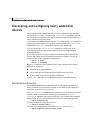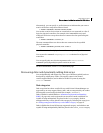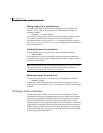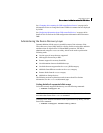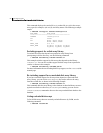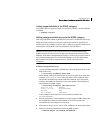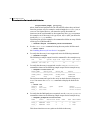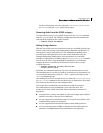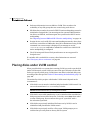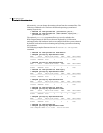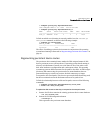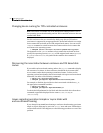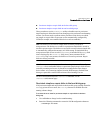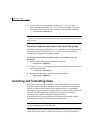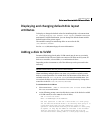
90 Administering disks
Placing disks under VxVM control
■ Enclosure information is not available to VxVM. This can reduce the
availability of any disk groups that are created using such devices.
■ EFI disks that are under the control of HP-UX native multipathing cannot be
initialized as foreign disks. You must migrate the system to DMP, initialize
the disk as an EFI disk, and then migrate the system back to HP-UX native
multipathing.
See “Migrating between DMP and HP-UX native multipathing” on page 130.
■ Foreign devices, such as HP-UX native multipathing metanodes, do not have
enclosures, controllers or DMP nodes that can be administered using VxVM
commands. An error message is displayed if you attempt to use the
vxddladm or vxdmpadm commands to administer such devices while HP-UX
native multipathing is configured.
■ The I/O Fencing and Cluster File System features are not supported for
foreign devices.
If a suitable ASL is available for an array, these limitations are removed.
See “Third-party driver coexistence” on page 84.
Placing disks under VxVM control
When you add a disk to a system that is running VxVM, you need to put the disk
under VxVM control so that VxVM can control the space allocation on the disk.
Unless you specify a disk group, VxVM places new disks in a default disk group
according to the rules given in “Rules for determining the default disk group” on
page 168.
The method by which you place a disk under VxVM control depends on the
circumstances:
■ If the disk is new, it must be initialized and placed under VxVM control. You
can use the menu-based
vxdiskadm utility to do this.
Caution: Initialization destroys existing data on disks.
■ If the disk is not needed immediately, it can be initialized (but not added to a
disk group) and reserved for future use. To do this, enter none when asked
to name a disk group. Do not confuse this type of “spare disk” with a
hot-relocation spare disk.
■ If the disk was previously initialized for future use by VxVM, it can be
reinitialized and placed under VxVM control.
■ If the disk was previously used for a file system, VxVM prompts you to
confirm that you really want to destroy the file system.



